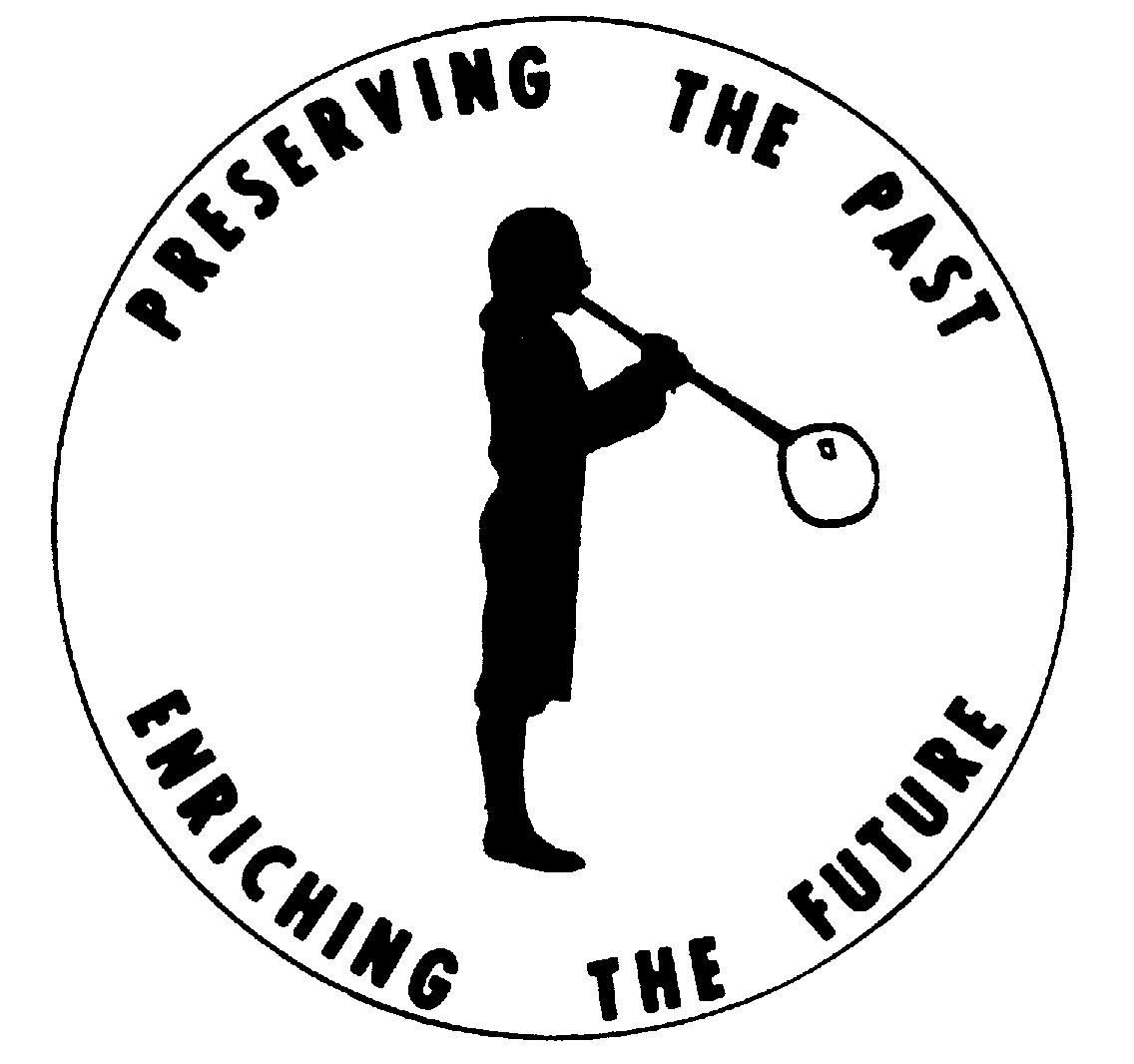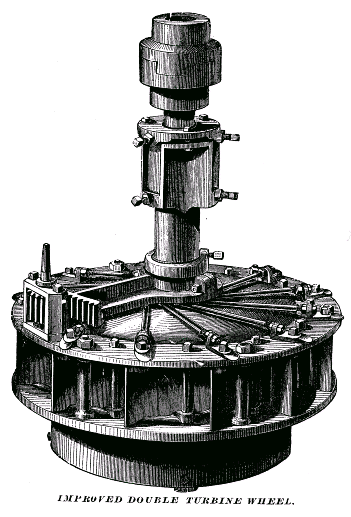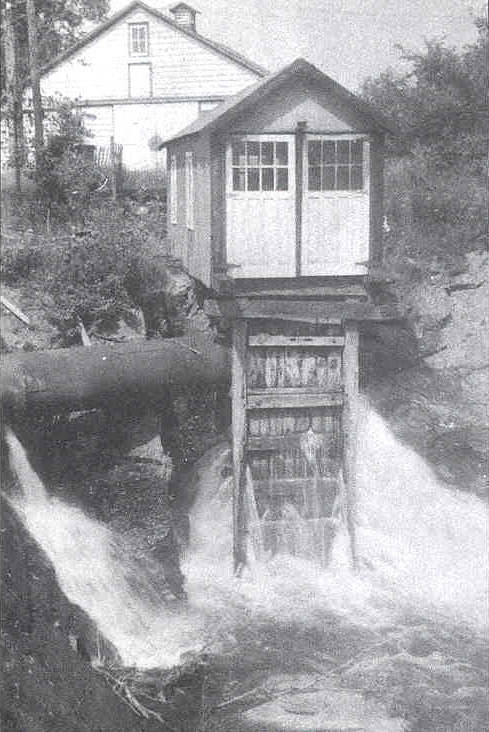
Historical Highlights
Clifford Hastings Brings Electricity to Sand Lake
It was a cool evening. All roads leading to West Sand Lake were crowded with horses and wagons, coaches, and walkers. "Clifford has turned on the lights!" was the cry.
For the past few weeks, neighbors watched while work crews erected poles and strung wire from the Hastings' farm to the Four Corners. They had heard that Clifford Hastings had built an electric generating plant and tonight he was to close the switch.
The lights turned on and the Four Corners were aglow with light. Everyone was traveling to West Sand Lake to see this amazing event. Compared to their oil lamps and candles, this was bright light, and a modern marvel. People just stood there and looked with wonder.
How did this come about? And who was Clifford Hastings?
 Clifford Hastings was born in Troy, NY, on June 25, 1882, the son of Milan and Edith R. Snyder Hastings, born into an
age of electrical discovery. The coming of electricity surrounded his very early years. The year before he was
born, the Troy Electric Light Co. was incorporated. He must have watched some of the street lighting installation
and could say "The first I remember of electric lights was when I was about four years old." In 1889
when he was six, the Troy Lansingburgh Railway Co. began the work of equipping its various horse railways with
electricity, thus ending the era of horse-drawn streetcars.
Clifford Hastings was born in Troy, NY, on June 25, 1882, the son of Milan and Edith R. Snyder Hastings, born into an
age of electrical discovery. The coming of electricity surrounded his very early years. The year before he was
born, the Troy Electric Light Co. was incorporated. He must have watched some of the street lighting installation
and could say "The first I remember of electric lights was when I was about four years old." In 1889
when he was six, the Troy Lansingburgh Railway Co. began the work of equipping its various horse railways with
electricity, thus ending the era of horse-drawn streetcars.
Clifford's early education was in local public schools. Later he took a course in Electrical Engineering from International
Correspondence School. His first job was in 1896 with the Troy City Railway, operators of the early electrified
street railways which in 1901 became the United Traction Co. Clifford worked in Troy until about 1910 when United
Traction purchased the Troy and New England Railway.
The Troy and New England Railway, an enterprise begun by the Averills and others, was to run from Albia to Averill Park. The main power plant was started in 1902. A coal-fired steam electric generating plant was built on land purchased from his grandfather Ephraim Hastings. The main line tracks were laid across Hastings' land adjacent to the Grist and Cider Mill in West Sand Lake. [It was this power plant that was dismantled and then reassembled on Eastern Union Turnpike in 1933 to become the Town Garage.]
With this background, Clifford decided that he could build a hydro-electric plant and supply Sand Lake with electric lights. Still employed by United Traction, all work was done in his spare time.
First he built a small addition to the gristmill and had the first floor for a generator and equipment and a small room on the second floor for an office.
 He purchased a modern vertical Leffel water turbine, with a gear-driven horizontal shaft, a large wooden flywheel,
a 50 kw, 2300-volt, 3-phase generator, a switch board with ammeters, a volt meter and an oil switch. All of this
was done in the daytime while he was still working nights at the Railway Powerhouse.
He purchased a modern vertical Leffel water turbine, with a gear-driven horizontal shaft, a large wooden flywheel,
a 50 kw, 2300-volt, 3-phase generator, a switch board with ammeters, a volt meter and an oil switch. All of this
was done in the daytime while he was still working nights at the Railway Powerhouse.
Once he was satisfied with the operation of the generator, he had a local farmer cut some chestnut poles and, obtaining
a franchise to set poles along the highway, he built a transmission line to the Four Corners of West Sand Lake
and hung a small transformer and a street light. All was set for that big night to introduce electric lights to
Sand Lake.
The demonstration was a success, for after a few days, one of the hotels on the corner applied for service. The
hotel was wired and connected to the line. It is reported that the first light was installed over the pool table.
More and more people made application for lights. A company was formed and incorporated, as the Wynantskill Hydro-Electric
Co. Officers were Clifford C. Hastings, president; his brother Douglas, Secretary-Treasurer; and their Mother Edith
Snyder Hastings. Clifford took care of the construction and wiring and Douglas took care of the finances and billing.
Both held other jobs as well.
In the beginning power was only available from dusk until 11:00 p.m. The water supply used to run the turbine came from Crooked, Glass and Crystal Lakes and was controlled by the Wynantskill Improvement Association for use by the mills along the Wynantskill Creek. The mills did not work nights and the water had to be stored during the day in Hastings' pond for night operation of the hydroelectric plant.
Every night or any time the power was to be turned off for lack of water or for repairs, the switch was dropped three times at quick intervals. This was the signal for people to light their oil lamps, for the power would be turned off in 10 minutes.
To finance construction, the company would furnish and set the poles, and the customer would supply the wire. Business picked up quite fast, and both men now only worked at their other jobs part time to keep up with the demands of their electric company.
In the winter of 1913, the ice on the pond became so thick that it forced the concrete dam out. All the water reserve was lost, and of course so was the power. This was a major catastrophe. A method of driving the generator had to be found. Clifford "put on his thinking cap" and came up with a solution.
 [Left: the gatehouse that controlled water flow for the Wynantskill Hydro-Electric Company. (Photo courtesy Robert Hastings.)] The next day, he went to a friend who did threshing at different farms and had a horse-drawn portable steam
engine. They drew the engine along side the mill, disconnected the water wheel and belted the engine to the drive
shaft. And that night, lights were on as usual. A temporary wooden dam was then built ahead of the old dam and
water was again available while the concrete dam was rebuilt. All materials had to be drawn in by horse and wagon
from Troy, which was a day's trip.
[Left: the gatehouse that controlled water flow for the Wynantskill Hydro-Electric Company. (Photo courtesy Robert Hastings.)] The next day, he went to a friend who did threshing at different farms and had a horse-drawn portable steam
engine. They drew the engine along side the mill, disconnected the water wheel and belted the engine to the drive
shaft. And that night, lights were on as usual. A temporary wooden dam was then built ahead of the old dam and
water was again available while the concrete dam was rebuilt. All materials had to be drawn in by horse and wagon
from Troy, which was a day's trip.
To get stone for the new dam, a flat-bottomed barge was built to pole up and down the creek and stone was loaded from along the shore. The work took most of the summer. In the meantime, the cider and gristmills were not used for grinding corn or making cider.
Business increased, and electric lines were expanded to Averill Park, Sand Lake, Glass Lake and Crooked Lake, with all the work was being done from a one-horse line wagon.
About this time, the McLaren Mill of West Sand Lake made application for electric power. Since Wynantskill Hydro Power's equipment was not large enough to provide service without making many changes, the application was refused.
As a result, in 1918, J&R McLaren Knitting Mill in West Sand Lake applied to the Sand Lake Town Board for permission to install an electric power line. This line would connect to the Albany and Southern Railroad and Power Company's transmission line at the southern end of Burden Lake in Nassau. From that point it would run along the west shore of Burden Lake and bring electric power to both the McLaren Mill in West Sand Lake and Faith Mills in Averill Park.
Albany and Southern Railroad and Power Co built a 13,200 volt cross-country to the McLaren mill. This infringed on the Wynantskill Hydro's Franchise as it went through both Sand Lake and North Greenbush. A court settlement was reached where Albany and Southern agreed to build a substation and furnish backup power to Wynantskill Hydro Co. This then allowed Wynantskill Hydro to take on any new load by just increasing the copper and transformer size.
Albany and Southern was an interurban trolley that ran from Albany to Hudson, New York. From the early 1900s it had been selling its excess power to customers along its right of way, thus becoming the predecessor of the electric utility companies.
In 1922 the village of Wynantskill tried to get the Troy Gas Company to extend their lines to sparsely settled areas. Service was refused and the Wynantskill Hydro took the franchise for the Town of North Greenbush. Power lines were extended to Snyders Lake and the Village of Wynantskill.
Also in 1922 Rensselaer County built a new tuberculosis hospital complex known as Pawling Sanitarium and made application to the Wynantskill Hydro Power Company for service. To take care of this increased load, the old cider mill was cleaned out and a coal-fired steam boiler installed. A horizontal Westinghouse Steam engine and a second 50kw 2300 volt generator was installed. A three-phase line was then built cross-country from the line on Route 150 across Route 66 to the hospital.
Twenty-four-hour service was now necessary, but Wynantskill Hydro was still a family business. To provide nighttime supervision of the generators, a cot was put in the upstairs office. The nighttime shift was divided. Clifford Hastings operated Monday and every other Thursday and Saturday nights. His brother Douglas Hastings worked the other nights. If either wanted the night off, Clifford's son D. Robert Hastings was elected.
Douglas Hastings was very inventive and designed and built a control and alarm system to awaken whoever was on night duty. To control voltage he installed a voltage regulator consisting of two magnets. He disconnected the governor on the water wheel, which operated too slowly in opening and closing the water gates. Then he installed an automobile starter motor on the gates of the water wheel. When the voltage dropped, the motor quickly opened the gates. When the load dropped, it quickly closed them.
 He also built an alarm system in the office so if anything happened while sleeping, a bell woke up whoever was
on the night shift. The alarm consisted of a solenoid magnet energized by a 110-volt power. A bell powered by a
storage battery was installed in the office. When the power went off, the magnet holding a condenser dropped, closing
the circuit and causing the alarm to sound. Thereby, the person on duty could get his night sleep and be awakened
when the need arose.
He also built an alarm system in the office so if anything happened while sleeping, a bell woke up whoever was
on the night shift. The alarm consisted of a solenoid magnet energized by a 110-volt power. A bell powered by a
storage battery was installed in the office. When the power went off, the magnet holding a condenser dropped, closing
the circuit and causing the alarm to sound. Thereby, the person on duty could get his night sleep and be awakened
when the need arose.
In 1926, Clifford C. Hastings negotiated the sale of the Wynantskill Hydro Electric Corporation to Associated Gas
and Electric Company and retired from business to devote himself largely to the sphere of public service. That
same year he was elected Supervisor of the Town of Sand Lake. He also served on the County Board of Supervisors
without interruption for ten years.
While supervisor, the 1902 coal-fired steam electric generating plant of the Troy New England railway was torn
down. Clifford donated the materials to the town for the Town Garage on Eastern Union Turnpike and Holcomb Road.
It is almost a replica of the old power plant and was completed in 1933 as a Works Progress Administration (WPA)
project. The old brick building [seen above] is owned by the Town of Sand Lake and was used as the town garage.
A possible reuse for the building is being sought.
In 1936 he was elected to a seat in the State Senate, where he represented the 31st State Senatorial District. He made his influence felt in the conduct of the State's business and was celebrated for his oratory on the Senate floor. In 1944 Clifford C. Hastings was appointed Treasurer of the County of Rensselaer by Governor Thomas Dewey. He was in poor health and in spite of his frailness he remained a dynamic person to the end of his life. He died on Sept 26, 1946.
[NOTE: The above is based on "The Wynantskill Hydro Electric-Electric Co. -- As I Saw it Grow," by D. Robert Hastings, plus additional research.] -- By Robert J. Lilly, from Historical Highlights, vol. 31, no. 2, Winter 2005